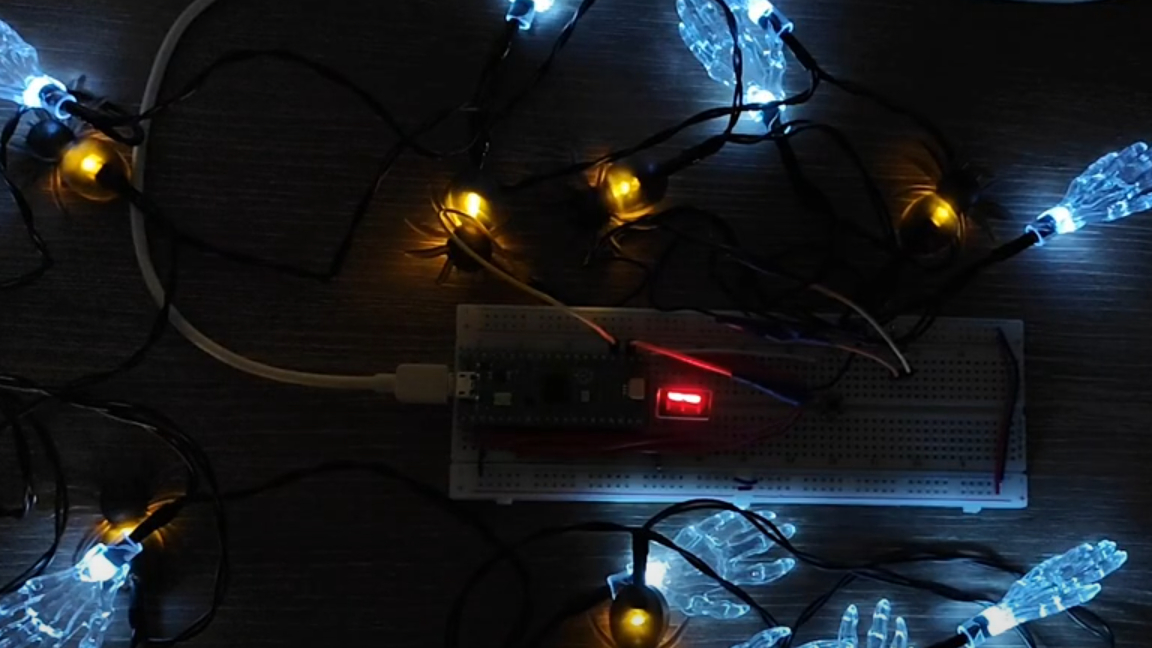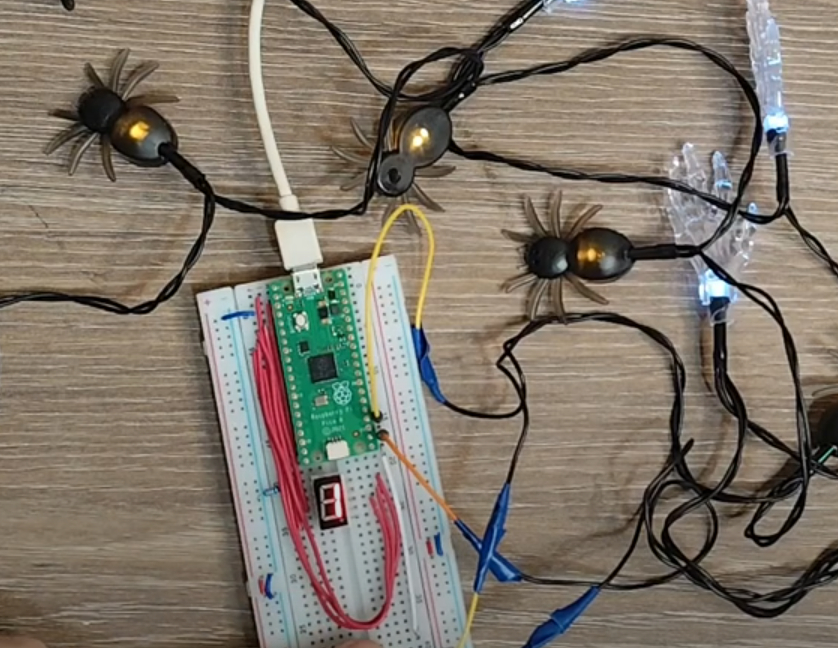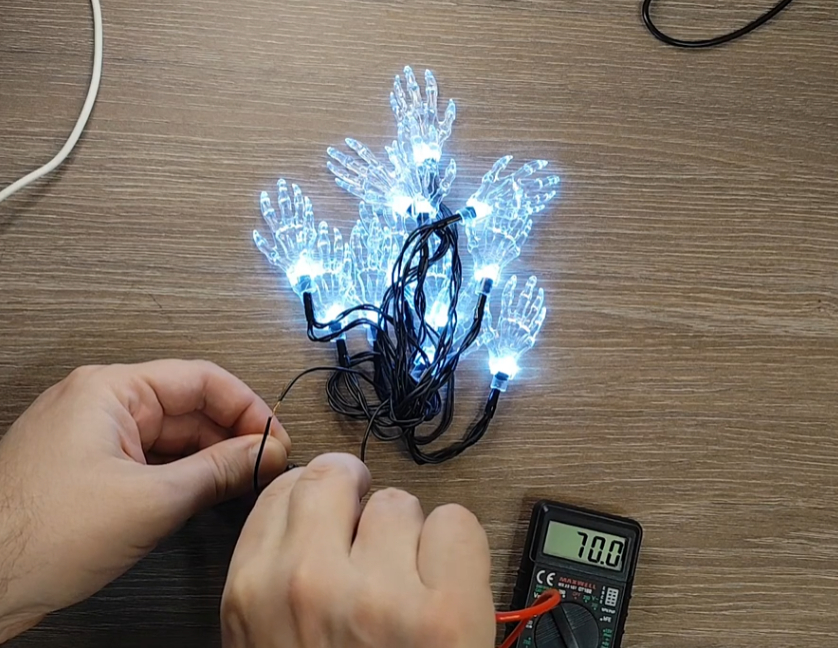
Thanks to our favorite SBC—the Raspberry Pi—there are all kinds of ways to transform Halloween decorations. Today, we've got another great example of just such a project created by Computing Mongoose. Using a Raspberry Pi Pico microcontroller, Computing Mongoose has upgraded some regular Halloween lights to flash and flicker with various special effects.
This project actually involves two separate string lights—one set that looks like skeleton hands and another set that looks like spiders. With just one Pico, Computing Mongoose can control them both and has implemented quite a few different patterns that use them both.
A couple of 1.5V batteries power the lights. Computing Mongoose threw a button alongside the Pico to operate the various effects. It's important to note that these are just regular string lights, so they're not individually addressable. That said, Computing Mongoose devised a few unique ways to animate them. They can do things like flash, stay illuminated, or even go back and forth.


You don't need the latest Raspberry Pi Pico 2 to complete this project. Computing Mongoose is using a regular Raspberry Pi Pico, but there's no reason you couldn't use one if that's what you have on hand. In the video showing off the project, we see the Pico connected to a breadboard along with the button mentioned above and a seven-segment display to help you keep track of which effect is selected.
Computing Mongoose also delves deep into the code used to operate the Halloween lights and the seven-segment display. The code was written from scratch by Computing Mongoose in C. So far, it's not been shared on his GitHub page, but we get a good look at it in the video shared on his channel.
If you want to get a closer look at this spooky Raspberry Pi project in action, you can check it out at Computing Mongoose's official YouTube page. There, you'll find plenty of details showing off not only the finished product but also information on how you can reconstruct it yourself at home.







